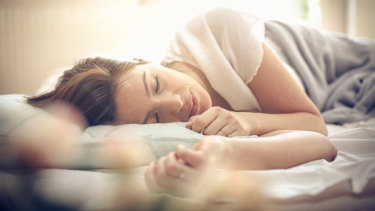Tired and irritable by mid-afternoon? There’s a nap for that
If you're usually office-bound, now is the perfect time to take advantage of the pleasures of a daytime nap. For those who, like me, work from home, taking a nap whenever you like is one of the things that makes home working worthwhile, alongside the short commute, the relaxed dress code and colleagues not sidling up to your desk and asking if they can "borrow you for a minute?". And let me tell you, I'm very, very good at napping.
Now is the perfect time to take advantage of the pleasures of a daytime nap.
For me, a daytime nap is one of the most civilised distractions ever invented. It's what made renowned afternoon dozers like Leonardo da Vinci and Albert Einstein the geniuses they were. It's why sports legends like Muhammad Ali and Usain Bolt rewrote the record books. And why Benjamin Franklin and JFK became political visionaries. And probably why Donald "No naps for Trump! I don't nap!" Trump didn't.
Me? I look to another famous day sleeper for my inspiration, Winston Churchill. A vehement proponent of the afternoon nap, Churchill believed it wasn't nature's design for mankind to work all day "without the refreshment of blessed oblivion which, even if it only lasts 20 minutes, is sufficient to renew all the vital forces".
I'm not saying we wouldn't have won World War II if Churchill hadn't been a napper but you have to wonder, not least because Adolf Hitler was the polar opposite, a night owl fond of late-night cake binges and indecently long lie-ins.
Science is certainly on Churchill's side. William Dement, founder of Stanford University's Sleep Research Centre and perhaps the world's leading authority on sleep, says we have merely learned to limit our sleep to one period of the day, whereas most mammals sleep in short spells.
He believes humans were designed to sleep in the middle of the day, primarily as a way to avoid the midday sun, and the fact we still all tire in the afternoon, especially as we hit middle age, shows us that we're fighting a natural instinct not to snooze, armed only with snacks and strong coffee. And yet the daytime nap is still frowned upon, especially in the workplace. In the United States in November, there was a crackdown on federal employees who had taken to dozing at work. The General Services Administration issued a Federal Notice stipulating that no employee would be permitted to sleep in a government building "except when such activity is expressly authorised by an agency official". Good luck with that.
Some companies are ahead of the curve. Google and NASA have installed "EnergyPods" at some of their offices so staff can slope off and sleep. Ben & Jerry's has "Nap Rooms" for their staff, the only stipulations being that there's a 20-minute time limit and users must remove their shoes. Cynics might argue it's just a ruse to keep employees at work longer but it sure looks like a step in the right direction.
Besides, if smokers get three or four cigarette breaks each working day, why shouldn't someone have a short snooze? After all, we all know what's better for you.
The benefits of a power nap are many, and a short sleep during the day can not only improve mood and alertness but can also increase creativity and productivity. It goes beyond the workplace, too.
Not only are daytime nappers less likely to be involved in car accidents on the way home from work, but a recent study of 3500 adults in the journal Heart revealed that those who took at least two naps each week were 48 per cent less likely than non-nappers to suffer serious cardiovascular problems.
Another study, published in the International Journal of Behavioral Medicine, found nappers maintained lower blood pressure than those who didn't hit the hay during the day. But what is the optimum length of a daytime doze? Well, it's best to think in terms of a short, sharp snooze, not a full-on siesta.
And while NASA reported that the responsiveness of its pilots and astronauts increased significantly after a 40-minute nap (presumably not mid-flight), the research journal Sleep says even a 10-minute nap can give considerable improvements in cognitive performance. Any longer than 30 minutes, however, and you're likely to suffer from sleep inertia, that groggy feeling you get when you come round from a deeper sleep.
I know the feeling. I might be an Olympic-standard napper now, but stealing a snooze is a skill I've had to learn, an art that needed to be mastered. My tips? Avoid the dangerous crick-in-the-neck threat of the armchair and always set an alarm. And never, repeat never, get under the blanket or your entire day will disappear in dribble on the pillow. Follow these rules and you'll soon be napping with confidence, enjoying the sweet bliss of "blessed oblivion".
The Telegraph, London
Source: Read Full Article



